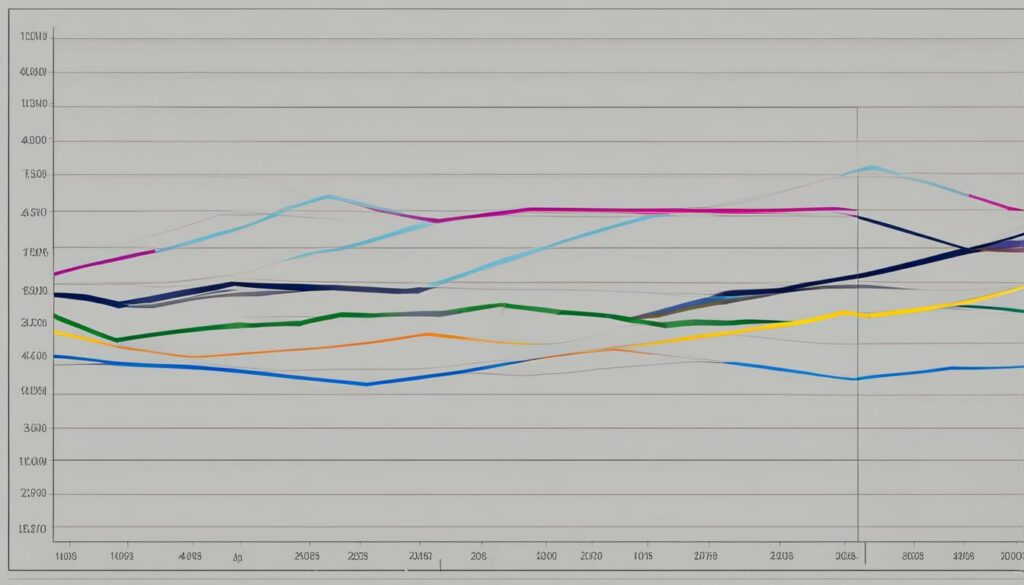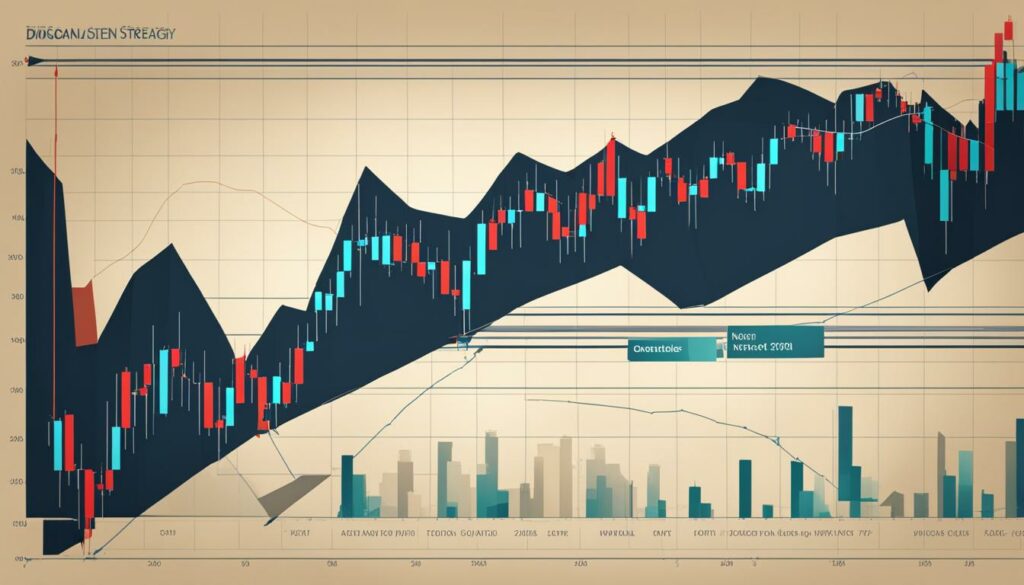Let’s Keep It Low: Best Low IV Options Strategies for High Returns


Today, we are looking at low implied volatility (IV) options strategies. These strategies are designed to perform well when volatility moves from low to high. Positive vega strategies are particularly effective in this scenario. Implied volatility exhibits a mean-reverting characteristic, meaning that when it is lower than normal, it tends to eventually increase back to its average. In a low volatility environment, it is important to use option strategies that have positive value so that they can benefit when IV returns to its mean.
The three broad categories of strategies that have positive vega are long calls and puts, calendar spreads (including double calendars and calendar straddles), and diagonal spreads (including double diagonals and synthetic covered calls). It’s important to consider the VIX as a measure of volatility and determine what level is considered low for the current market conditions.


Key Takeaways:
- Low IV options strategies are designed to benefit from an expected increase in implied volatility.
- Positive vega strategies, such as long calls and puts, calendar spreads, and diagonal spreads, are effective in low IV environments.
- Identifying underlyings with low IV is crucial for implementing these strategies.
- Risks associated with low IV options strategies include limited profit potential if IV doesn’t increase as expected.
- Traders should implement risk management techniques and stay informed about market events and IV levels.
Positive Vega Strategies
When it comes to navigating low implied volatility (IV) environments, positive vega strategies can be a valuable tool for options traders. These strategies are designed to benefit from an increase in implied volatility, which often occurs when IV moves from low to high. By utilizing positive vega strategies, traders can manage their risks and potentially achieve higher returns when IV returns to its mean.
Vega is one of the Greeks that measures the sensitivity of an option’s price to changes in IV. Options with positive vega values are particularly effective in low IV environments because they increase in value when IV increases. This makes them well-suited for capturing potential profit opportunities when IV returns to its average level. Positive vega strategies can help traders navigate periods of low volatility and position themselves for potential upside.
“By utilizing positive vega strategies, traders can manage their risks and potentially achieve higher returns when IV returns to its mean.”
Managing Risks with Low IV Strategies
While positive vega strategies offer potential benefits in low IV environments, it’s important for traders to be aware of the risks and take appropriate steps to manage them. One key risk is that IV may not increase as expected, resulting in limited profit potential for positive vega strategies. Market conditions and other factors can also impact the performance of these strategies.
To mitigate these risks, traders should implement risk management techniques such as using appropriate position sizing, setting stop-loss orders, and maintaining diversification. It’s important to thoroughly understand the risks associated with each strategy and adjust risk management measures accordingly.
Being informed about market events and monitoring IV levels is crucial for adapting strategies to changing market conditions. By staying vigilant and staying on top of market developments, traders can make more informed decisions when utilizing positive vega strategies in low IV environments.
Long Calls and Puts
Long calls and puts are basic options strategies that can be effective in low implied volatility environments. A long call option profits from an increase in the underlying asset’s price, while a long put option profits from a decrease in the underlying asset’s price. These strategies have positive vega, which means their value increases with an increase in IV. However, it’s important to note that long calls and puts are directional trades and may not be suitable for all traders. They are most effective when there is a strong opinion or expectation of a significant move in one direction.
Example:
Let’s consider an example involving a long call option. Suppose Company ABC is trading at $50 per share, and you believe that its price will increase due to upcoming positive news. You decide to buy a long call option with a strike price of $55 and an expiration date several months in the future. If the stock price rises above $55 by expiration, you can exercise the option and purchase the shares at a lower price, profiting from the price difference. This strategy allows you to benefit from potential upside while limiting your risk to the premium paid for the option.
It’s important to evaluate the potential profit and risk associated with long calls and puts before implementing these strategies. Traders should consider the time remaining until expiration, the implied volatility level, and the underlying asset’s price movements. It’s also crucial to have a solid understanding of options pricing and factors that can impact their value. Proper risk management and position sizing are essential to ensure a balanced and disciplined approach to trading long calls and puts in low volatility environments.
| Advantages of Long Calls and Puts | Disadvantages of Long Calls and Puts |
|---|---|
|
|


Calendar Spreads
Calendar spreads are versatile options strategies that involve buying and selling options with different expiration dates. These spreads can be a valuable tool for traders looking to take advantage of time decay and changes in implied volatility (IV). The two main types of calendar spreads are the calendar straddle and the double calendar.
The calendar straddle is constructed by simultaneously buying a call option and a put option with the same strike price, but different expiration dates. This strategy profits from an increase in IV and can generate income through time decay. It’s important to note that the maximum profit potential is achieved when the underlying asset’s price lands near the strike price of the options at expiration.
The double calendar spread involves buying and selling two calendar spreads with different strike prices. This strategy allows traders to profit from a range-bound market, as the goal is to have the underlying asset’s price stay within a certain range until expiration. By selecting strike prices that create a profit zone, traders can mitigate risk and maximize potential gains.
| Strategy | Advantages | Disadvantages |
|---|---|---|
| Calendar Straddle | Profit from increase in IV Generate income through time decay | Maximum profit at options’ strike price Potential for losses if underlying asset’s price moves significantly |
| Double Calendar Spread | Profit from a range-bound market Potential for both time decay and IV increase | Potential for losses if underlying asset’s price moves outside profit zone |
When implementing calendar spreads, it’s crucial to carefully consider the strike prices and expiration dates used. Traders should also monitor IV levels, as higher IV typically results in larger profits for these strategies. Additionally, risk management techniques, such as position sizing and stop-loss orders, can help protect against potential losses.
Diagonal Spreads
In options trading, diagonal spreads are versatile strategies that combine options with different expiration dates and different strike prices. These strategies are designed to take advantage of both time decay and changes in implied volatility (IV). Diagonal spreads can be employed in both bullish and bearish market conditions, offering flexibility and customization to suit the trader’s market outlook and risk tolerance.
A popular example of a diagonal spread strategy is the double diagonal. This strategy involves using both put and call options with different strikes and expiration dates. Traders can enter a double diagonal spread by simultaneously selling a short-dated call and a short-dated put option, while also buying a long-dated call and a long-dated put option. The goal is to profit from the decay in extrinsic value of the short options while benefiting from any increase in IV and movement in the underlying asset’s price.
Another variation of diagonal spreads is the synthetic covered call. This strategy involves buying a long call option and selling a short call option with a higher strike price. The synthetic covered call aims to replicate the payoff of a covered call position using options, offering potential profit as long as the underlying asset’s price remains below the sold call option’s strike price.
Benefits of Diagonal Spreads
Diagonal spreads provide several advantages for traders. Firstly, they offer the potential to profit from time decay. As the short options in the spread approach expiration, their extrinsic value decreases, resulting in potential gains. Secondly, diagonal spreads can benefit from an increase in implied volatility. When IV rises, the long options in the spread increase in value, contributing to overall profitability. Additionally, diagonal spreads allow traders to customize their strategies based on their market outlook and risk appetite, providing flexibility and versatility in options trading.
By incorporating diagonal spreads into their options trading arsenal, traders can explore additional ways to navigate low implied volatility environments, potentially generating profits while managing risks. These strategies require careful analysis and consideration of factors such as strike prices, expiration dates, and IV levels. It is important for traders to thoroughly understand the mechanics of diagonal spreads and the potential risks involved before implementing these strategies in their options trading.


Identifying Low IV Underlyings
In order to implement effective low IV options strategies, it is crucial to identify underlyings with low IV. By understanding how to identify these underlyings, traders can select the most appropriate strategies that have the potential to lead to high returns in a low IV environment.
One way to identify underlyings with low IV is by looking at the VIX range over a specific period, such as one or two months. The VIX is a commonly used measure of market volatility and can provide insights into the current IV level. By analyzing the VIX and comparing it to historical data, traders can determine if the current IV level is relatively low.
Additionally, traders can utilize tools and platforms that provide IV data for individual stocks. These tools can display the IV of different stocks and allow traders to compare IV levels across various underlyings. By assessing the IV of individual stocks and comparing it to their historical IV levels, traders can identify underlyings with low IV.
Once underlyings with low IV are identified, traders can then select the most suitable low IV options strategies that align with their market outlook and risk tolerance. It’s important to note that different strategies may be more effective in different market conditions, so ongoing analysis and adjustment of strategies may be necessary.


Example Table: Comparison of IV Levels for Different Stocks
| Stock | Current IV | Historical IV |
|---|---|---|
| Stock A | 10.2% | 15.8% |
| Stock B | 8.6% | 12.4% |
| Stock C | 9.3% | 14.1% |
Traders can utilize various tools and platforms to access IV data for different stocks. By comparing the current IV levels to historical data, traders can identify underlyings with low IV.
In summary, identifying underlyings with low IV is a crucial step in implementing effective low IV options strategies. By analyzing the VIX range, utilizing tools for accessing IV data, and comparing IV levels to historical data, traders can determine underlyings with low IV. This allows them to select the most suitable strategies that have the potential to lead to high returns in a low IV environment.
Risks and Considerations
While low IV options strategies can be effective in certain market conditions, it is important to understand the potential risks associated with them. Here are some considerations to keep in mind:
- Limited profit potential: One key risk is that IV may not increase as expected, resulting in limited profit potential for positive vega strategies. If IV remains low or decreases further, the value of these strategies may not appreciate significantly.
- Market conditions: Market conditions, such as unexpected news or events, can impact the performance of low IV strategies. Sudden changes in volatility, stock prices, or other factors may not align with the anticipated outcomes of these strategies.
- Strategy suitability: It is important to carefully assess the suitability of each strategy for your trading goals and risk tolerance. Some strategies, such as long calls and puts, are directional in nature and require a strong opinion on the future movement of the underlying asset.
“Risk comes from not knowing what you’re doing.” – Warren Buffett
To mitigate these risks, it is recommended to implement proper risk management techniques. This can include using appropriate position sizing to limit exposure, setting stop-loss orders to protect against large losses, and diversifying your options strategy portfolio to spread risk across different trades.
Example Strategy
Let’s take an example of a low IV options strategy using a calendar spread. Suppose the underlying stock is trading at $100, and we believe that IV is currently low and will increase in the future. We can sell a short-dated call option with a strike price of $105 and buy a long-dated call option with the same strike price. By doing so, we collect premium from the short call and aim to profit from an increase in IV when the long call option appreciates in value. This strategy allows us to benefit from the expected increase in IV while limiting our risk.
| Underlying Stock Price | IV | Short-Dated Call Premium | Long-Dated Call Premium | Profit/Loss |
|---|---|---|---|---|
| $100 | Low | Collected premium | Paid premium | To be determined |
| $105 | Increased | Reduced value | Increased value | To be determined |
In this example, if the IV increases as expected, the long-dated call option will appreciate in value, offsetting the reduction in value of the short-dated call option. The net result will be a profit from the difference in premium collected and paid. However, it’s important to note that this strategy is not without risks. If the IV does not increase as expected, the strategy may result in limited profit potential or even losses.
“By utilizing low IV options strategies, traders can potentially achieve high returns when IV increases.”
By implementing strategies like the calendar spread, traders can take advantage of low IV environments and position themselves for potential profits when IV returns to its mean. It’s important to carefully analyze market conditions, assess the IV levels of underlyings, and select the most suitable strategies that align with market expectations and risk tolerance. Through proper risk management and a thorough understanding of these strategies, traders can navigate low volatility markets and maximize their investment returns.


Conclusion
In options trading, low implied volatility (IV) plays a crucial role in determining the profitability of strategies. By recognizing the importance of low IV, traders can harness its potential to achieve high returns. Positive vega strategies, including long calls and puts, calendar spreads, and diagonal spreads, prove effective in low IV environments.
Implementing low IV options strategies requires careful consideration of associated risks and employing appropriate risk management techniques. Traders must be mindful that IV might not increase as expected, which can limit the profit potential of positive vega strategies. Market conditions and other factors can also influence the performance of these strategies. Therefore, staying informed about market events and continuously monitoring IV levels allows traders to adapt their strategies accordingly.
Identifying underlyings with low IV is essential in implementing low IV options strategies. Analyzing the Volatility Index (VIX) and individual stock IV levels provides valuable insight into the market’s volatility. By comparing current IV levels to historical data, traders can select the most suitable strategies with high return potential in a low IV environment.
In conclusion, while low implied volatility may present challenges, it also presents opportunities for options traders. By employing appropriate strategies and risk management techniques, traders can navigate low volatility markets and maximize their investment returns.
FAQ
What are low implied volatility (IV) options strategies?
Low implied volatility options strategies are strategies designed to perform well when volatility moves from low to high. They are particularly effective in low IV environments and aim to benefit from the expected increase in IV.
What are positive vega strategies?
Positive vega strategies are options trading strategies that have a positive vega value, meaning they benefit from an increase in implied volatility. They are designed to manage risks and potentially achieve higher returns when IV returns to its mean.
What are long calls and puts?
Long calls and puts are basic options strategies that can be effective in low implied volatility environments. A long call option profits from an increase in the underlying asset’s price, while a long put option profits from a decrease in the underlying asset’s price.
What are calendar spreads?
Calendar spreads are options strategies that involve buying and selling options with different expiration dates. They benefit from time decay (theta) and can profit if the underlying asset’s price remains relatively stable.
What are diagonal spreads?
Diagonal spreads are options strategies that combine options with different expiration dates and different strikes. They can be bullish or bearish and take advantage of both time decay and changes in IV.
How can I identify underlyings with low IV?
Traders can assess the IV of individual stocks using tools and platforms that provide IV data. By analyzing IV levels and comparing them to historical data, traders can identify underlyings with low IV.
What are the risks associated with low IV options strategies?
One key risk is that IV may not increase as expected, resulting in limited profit potential for positive vega strategies. It’s important to thoroughly understand the risks associated with each strategy and implement appropriate risk management techniques.
Can you provide an example of a low IV options strategy?
Sure! A calendar spread is an example of a low IV options strategy. It involves selling a short-dated call option and buying a long-dated call option with the same strike price. This strategy allows traders to benefit from the expected increase in IV while limiting their risk.
How can I maximize my returns in a low IV environment?
By utilizing low IV options strategies, carefully considering risks, and implementing appropriate risk management techniques, traders can navigate low volatility markets and potentially achieve high returns when IV increases.




